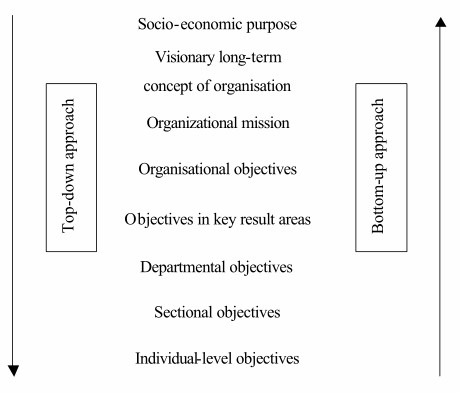Organizational objectives form a hierarchy ranging from the broad aim to specific individual objectives. The process of assigning a part of a mission to a particular department and then further subdividing the assignment among sections and individuals creates a hierarchy of objectives. The objectives of each subunit contribute to the objectives of the larger unit of which it is a part. In fact, the organization itself can be thought of as a social unit and, as such, its objectives are the extension of the objectives of the society. This can be explained in terms of end-means chain which suggests that what is a means for one unit may be an end for another unit. For example, if accomplishment of the overall objectives is the responsibility of top management in the organization, acquisition of the requisite means may be an end for the next lower level. In order to achieve this sub-objective, sub-means are necessary. Obtaining these sub-means then becomes the responsibility and consequently the objective of still lower level. This process goes on till a decision can be drawn on the existing product or programme available in the organization’s environment. This is presented in figure.


